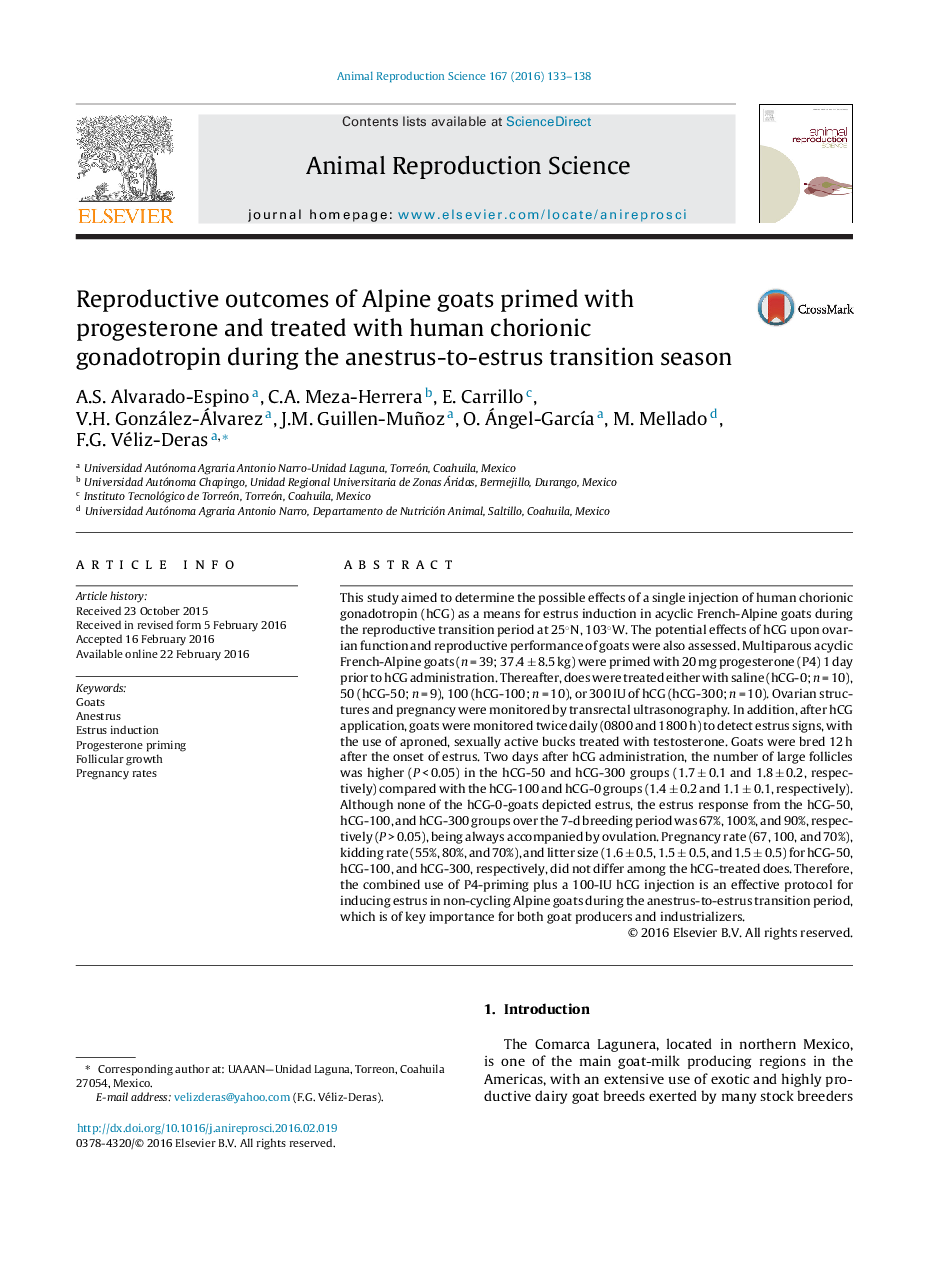| کد مقاله | کد نشریه | سال انتشار | مقاله انگلیسی | نسخه تمام متن |
|---|---|---|---|---|
| 2072619 | 1544710 | 2016 | 6 صفحه PDF | دانلود رایگان |
• We evaluate the possible effect of a single injection of hCG to induce estrus in acyclic French-Alpine goats.
• Does received either saline, 50, 100 or 300 IU of hCG durning the anestrus season.
• None of the control goats depicted estrus while all the hCG-treated groups depicted estrus activity.
• Pregnancy rate, kidding rate and litter size did not differ among the hCG-treated does.
• The combined use of P4-priming plus a single hCG injection was an effective protocol for inducing estrus in non-cycling Alpine goats.
This study aimed to determine the possible effects of a single injection of human chorionic gonadotropin (hCG) as a means for estrus induction in acyclic French-Alpine goats during the reproductive transition period at 25°N, 103°W. The potential effects of hCG upon ovarian function and reproductive performance of goats were also assessed. Multiparous acyclic French-Alpine goats (n = 39; 37.4 ± 8.5 kg) were primed with 20 mg progesterone (P4) 1 day prior to hCG administration. Thereafter, does were treated either with saline (hCG-0; n = 10), 50 (hCG-50; n = 9), 100 (hCG-100; n = 10), or 300 IU of hCG (hCG-300; n = 10). Ovarian structures and pregnancy were monitored by transrectal ultrasonography. In addition, after hCG application, goats were monitored twice daily (0800 and 1800 h) to detect estrus signs, with the use of aproned, sexually active bucks treated with testosterone. Goats were bred 12 h after the onset of estrus. Two days after hCG administration, the number of large follicles was higher (P < 0.05) in the hCG-50 and hCG-300 groups (1.7 ± 0.1 and 1.8 ± 0.2, respectively) compared with the hCG-100 and hCG-0 groups (1.4 ± 0.2 and 1.1 ± 0.1, respectively). Although none of the hCG-0-goats depicted estrus, the estrus response from the hCG-50, hCG-100, and hCG-300 groups over the 7-d breeding period was 67%, 100%, and 90%, respectively (P > 0.05), being always accompanied by ovulation. Pregnancy rate (67, 100, and 70%), kidding rate (55%, 80%, and 70%), and litter size (1.6 ± 0.5, 1.5 ± 0.5, and 1.5 ± 0.5) for hCG-50, hCG-100, and hCG-300, respectively, did not differ among the hCG-treated does. Therefore, the combined use of P4-priming plus a 100-IU hCG injection is an effective protocol for inducing estrus in non-cycling Alpine goats during the anestrus-to-estrus transition period, which is of key importance for both goat producers and industrializers.
Journal: Animal Reproduction Science - Volume 167, April 2016, Pages 133–138
